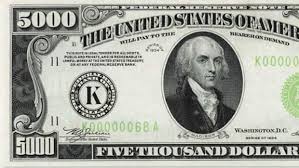Treasury and Federal Reserve Announce New Currency Design
Treasury Secretary Robert E. Rubin and Federal Reserve Board Chairman Alan Greenspan announced today that the U.S. will introduce a redesigned $100 note, featuring numerous new and modified security elements. The new note, set for release in early 1996, is the first in a series of redesigned U.S. currency aimed at staying ahead of advances in reprographic technology.
Secretary Rubin and Chairman Greenspan emphasized that the U.S. will neither recall nor devalue existing currency. With over $380 billion in U.S. currency in circulation, two-thirds of which is overseas, the integrity of the currency remains a priority.
The new design marks a significant step in an ongoing effort to secure the nation’s currency against increasingly sophisticated counterfeiting methods made possible by modern color copiers, scanners, and printers.
“What we are doing with the introduction of the 1996 series note is similar to what other administrations have done throughout our history: we are improving the security of the currency and maintaining its integrity and global reputation,” Secretary Rubin stated. “It is being modernized to stay ahead of printing technology and the counterfeiting threats it poses.”
Chairman Greenspan assured the public,
“The United States has never recalled its currency and will not do so now. Old notes will not be recalled or devalued. The United States always honors its currency at its full face value, no matter how old.”
Starting in early 1996,
new currency will be issued one denomination per year, beginning with the $100 bill. Older notes received by the Federal Reserve from depository institutions will be replaced with the new notes.
To accommodate the new security features,
the overall design has been slightly altered, with simplified borders. Effective deterrents such as microprinting and security threads, introduced in the 1991 series, will continue to be used. Key features of the new notes include:
- Larger Portrait: Moved off-center to create space for a watermark.
- Watermark: Depicts the same historical figure as the portrait, visible only when held up to the light.
- Security Thread: Glows red under ultraviolet light, positioned uniquely for each denomination.
- Color-Shifting Ink: Changes from green to black when viewed from different angles, used in the numeral on the lower right-hand corner.
- Microprinting: Found in the numeral on the lower left-hand corner and on Benjamin Franklin’s coat.
- Concentric Fine-Line Printing: In the background of the portrait and on the back, making it difficult to copy.
-
Additional Machine Authentication Features
The protection of each note is ensured through these combined features.
A global education campaign will inform users of U.S. currency about the design changes.
The New Currency Design Task Force,
consisting of representatives from the Treasury Department, Federal Reserve System, U.S. Secret Service, and the Bureau of Engraving and Printing (BEP), developed the new features. Additionally, a complementary report by the National Academy of Sciences, commissioned by the BEP, was released in December 1993.
The announcement took place in the Cash Room of the U.S. Treasury Department,
with Rubin and Greenspan joined by U.S. Treasurer Mary Ellen Withrow, U.S. Secret Service Director Eljay B. Bowron, Federal Reserve Board Governor Edward W. Kelley, Jr., BEP Director Larry Rolufs, and Treasury Under Secretary John D. Hawke, Jr.
Remarks by Secretary Rubin and Chairman Greenspan,
along with fact sheets on the currency, are available via Treasury’s interactive fax system at (202) 622-2040.

